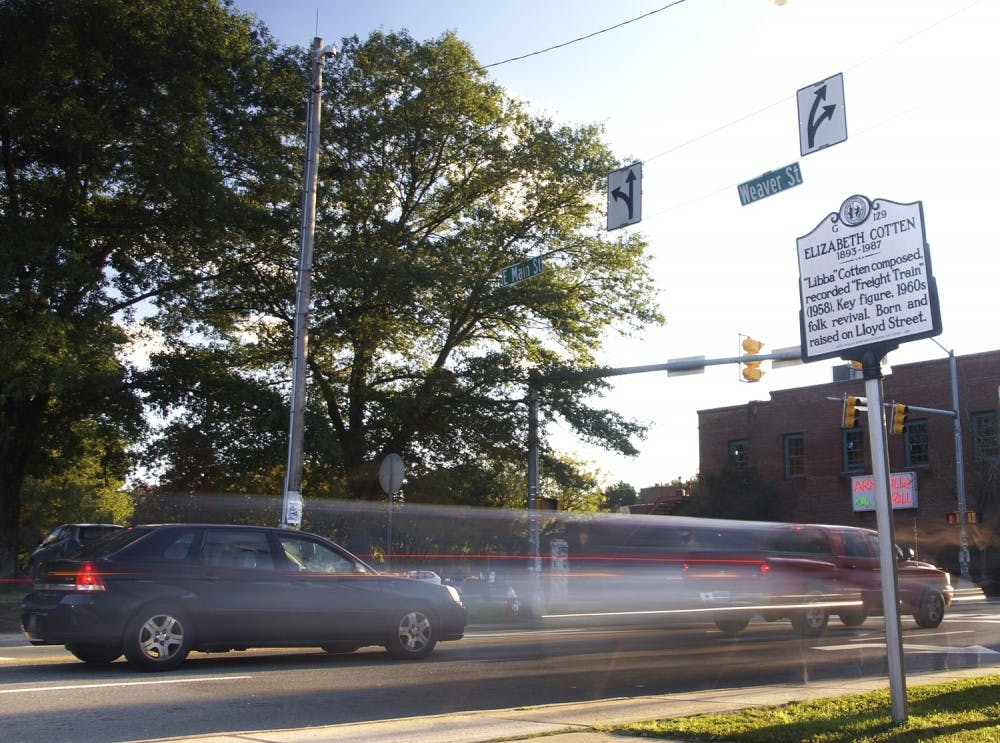In the 1980s, the Flat Duo Jets, an American psychobilly band, blended punk, rock and rockabilly to record its first hit in a garage in Chapel Hill. The act was a revolt against the classic bluegrass music the town was known for — a movement that sprouted from small, underground venues like The Cave and Rhythm Alley.
While The Cave remains tucked in a small Franklin Street alley, Rhythm Alley has since become Nightlight and All Day Records. Known for blasting electronic dance music one night, followed by country the next, Palm said Nightlight is a rare club.
“The dance music scene in Chapel Hill is the product of individual people becoming scene makers and community builders, like the owners of Nightlight,” Palm said.
The band Arrogance was also born in a UNC dorm room during the late '60s and claims to have started the indie rock revolution in Chapel Hill.
This revolution stuck with Chapel Hill for a while, thriving with groups like Superchunk, members of which started Merge Records — a popular indie record label that still exists in Durham.
The 2000s welcomed bands like Ben Folds Five and Squirrel Nut Zippers while the 2010s are becoming known for Americana music, a genre characterized by blending blues, country and string music. Mixes of Piedmont bluegrass and folk are seen in bands like Mipso, which are taking center stage at places like Cat’s Cradle, the Local 506 and the Haw River Ballroom.
Music to everyone’s ears
The town of Chapel Hill has made steps toward making live music and local art available to all, especially in the past 25 years.
In 1992, the Chapel Hill Public Arts Commission was formed as a subset of the Department of Parks and Recreation to foster creative activities for the town. Ten years later, the Percent for Art Program was established to subsidize public art. The ordinance requires one percent of a city project’s budget to be allocated toward funding the arts. Finally in 2008, overseeing the public and cultural arts became a full-time job.
Jeff York currently holds this position, called the public and cultural arts administrator, and said the town’s progress is far from over.
“The strength of a community has to do with the strength of the arts,” York said. “This is what we hope to achieve through Into the Streets.”
The program connects artists in residence with community members, as exhibited by the Festivals on the Plaza series. On summer evenings, live music drifted from the 140 West Plaza outside Old Chicago and Lime Fresh Mexican Grill and to the ears of passersby.
To get the day's news and headlines in your inbox each morning, sign up for our email newsletters.
“The goal is to get art out to people who normally wouldn’t go to museums or even pay attention to art,” York said. “Art is not just entertainment for the people who can afford it — it’s for everyone.”
The digital age
The evolution of Chapel Hill’s music scene changed drastically with the dawn of digital media.
It changed the set lists of WXYC. It allowed for discovery of underground bands. And most importantly, it elevated the importance of touring.
Just ask Libby Rodenbough, the fiddle player for Mipso. Founded by UNC students in 2010, the band enjoyed local success and packed Cat’s Cradle a number of times — but that wasn’t enough.
“If you want to make a living off making music and make this your career, you have to tour,” Rodenbough said.
Touring for nearly two years, she said the trips have significantly improved their following.
“You can’t stay local if you want to get your name out there and spread the word about your music,” she said. “This day and age, you’ve got to go beyond your hometown.”
Life on the road is a bit easier for the recent graduates than for Doug Largent of the Doug Largent Trio, another local band.
“With a little girl at home, I can’t really travel,” Largent said.
Unlike Mipso, the trio of locals play regular gigs at town venues like the Honeysuckle Tea House and the Looking Glass Cafe. While Largent said staying local fits his lifestyle, new media is making it hard for small bands to stay put.
“In the early '90s, there was a chance to get a record deal, which isn’t really possible anymore,” Largent said. “You don’t want one anyway. Now you’re better off making your own CDs and hitting the road.”
Palm agreed that the importance of touring has grown over the years.
“The master narrative about digital media is how it has decimated local scenes,” Palm said. “Geographical proximity is not as important as it once was.”
With more access to more music than ever, Palm said there is a new appreciation for live performances and the community that goes with them.
“Suddenly fans are understanding the significance of buying tickets and T-shirts,” Palm said. “It’s an act of economic fan-ship.”
According to York, the digital age hasn’t influenced Chapel Hill’s music scene too much, summing it up in one word — resilient.
“Venues open and close, galleries come and go, but something new always pops up,” he said.
Students in particular keep the trends in constant flux.
“Because it’s a college town, it means there are people with interests in nightlife entertainment, but it’s also part of the Research Triangle,” said Aaron Smithers, a folklorist who works for Wilson Library.
“So it’s this small town connected to a university, connected to a larger metroplex that ultimately leads to more opportunities.”
@ErinWyg28
arts@dailytarheel.com



